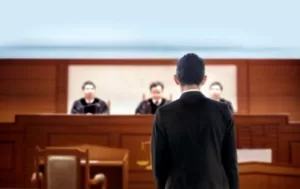Being the victim of violence, harassment, or other types of threats can be a harrowing experience for anyone. While such incidents are unfortunately all too common, Indiana laws provide significant protections from individuals who may be at risk. This article will walk through the details and requirements of obtaining a protective order in Indiana.
Indiana law provides a number of grounds under which an individual may obtain a protective order. The first is the standard Protection Order (I.C. 34-26-5), which offers protection for individuals who are victims of domestic violence, family violence, or harassment. A second type of protective order is a No-Contact Order (various Indiana code sections), which is often issued by a criminal court to protect victims from individuals charged with violent crimes. Another type is a Workplace Violence Restraining Order (I.C. 34-26-6), which is intended to protect individuals who are experiencing stalking, threats, or other harassing behavior while at their place of employment.
No-Contact Orders or Workplace Violence Restraining Orders may affect many individuals. These typically come up in criminal or employment contexts. However, for most people who are in need of a protective order, their means of protection will likely come under the standard protection order outlined under I.C. 34-26-5.
Indiana courts have fortunately made the process of obtaining an order of protection fairly straightforward. The individual seeking the order may either file in person, or file online. The courts’ online system allows for e-filing protection orders, and provides other useful resources.
To open a protection order case, you will complete and file a “petition for order of protection”. In the petition, you will note the type of behavior you are seeking protection from (domestic violence, harassing, stalking, etc.), and provide details of the incidents giving rise to your petition. You will also be able to provide documents in support of your petition.
Once your petition is received, the court will review it and make an initial determination. The judge will have the option of doing one of two things. First, the judge may issue an ex parte order of protection. This is a temporary order granting the request for an order of protection, without the other party’s involvement. Because these orders are granted in the absence of the other party, they are typically only issued in the most extreme cases, and will last for a maximum of 30 days. During that 30-day period, the other party will be notified, and provided with an opportunity to defend themselves in a hearing. At the conclusion of the hearing, the judge will then either dismiss the order of protection, or issue a permanent protective order, which will last up to 2 years.
The second option that the judge has upon reviewing a petition for protection is to simply set the matter for a hearing. At the hearing, each party would have the opportunity to present evidence showing why the petition for a protective order should be granted or denied. At a protective order hearing, you will want to be fully prepared to present testimony describing the threat posed by the other party. You will also want to have any documentary or video evidence available to submit to the court as evidence to review. At the conclusion of the hearing, the judge would then either deny or grant the request for protective order.
If you have additional questions, or need assistance with your legal matter, contact our office at (317) 514-2681 to schedule a consultation. You can also schedule your own consultation here. We look forward to helping you.
NOTE
All legal references are made with respect to Indiana law. Please check the laws of your local jurisdiction if you live in another state.
The articles in this blog are for informational purposes only. No attorney-client relationship is established through the publication of these articles.







